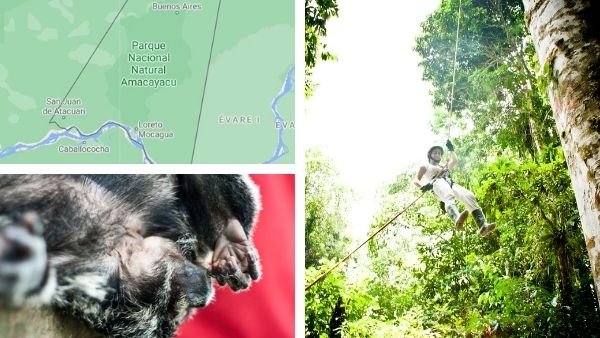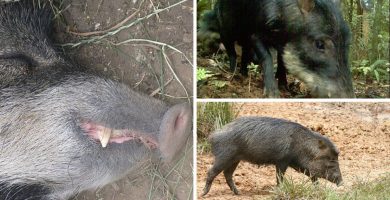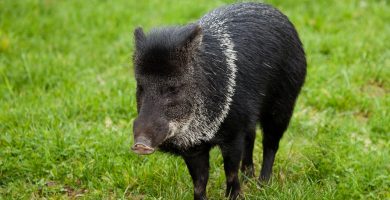
The Amacayacú National Park is a natural reserve in Colombia that was declared a protected area by the national government in 1975, in order to preserve the species that inhabit the Amazon jungle and contribute to education and dissemination of its environmental and cultural value, as well as the sustainable management of natural resources.
Where is the Amacayacú National Park located?
It is located in the town of Amacayacu, Leticia municipality, within the so-called Amazon Trapeze, which is a geographical corridor located in the extreme south of the Department of Amazonas, Colombia (ILAM Patrimonio, 2020).

The gateway to this park is Leticia, which has an international airport and daily commercial flights. From the port, taking the Amazon River upstream, to reach the Matamatá stream after a two-hour trip by boat with an outboard motor, about 60 km (Organización Colparques, 2020).

Its current extension is 293,500 hectares, with an ecosystem of warm tropical rain forest and floodplain forests.
The Amacayacu Park was created fundamentally with the aim of reserving representative areas of the natural heritage, conserving genetic banks and, above all, maintaining biological diversity and ecological balance (National Natural Parks of Colombia, 2020).
Amazon animals in the park
Amacayacu has an exotic jungle fauna, with around 150 species of mammals, highlighting the pink dolphin, the Amazonian manatee commonly known as the sea cow, the tapir, the jaguar and otter; at the same time it is the habitat of the Marmoset Leoncito (the smallest primate in the world); within the reptilesare the freshwater turtle, the morrocoy jabuti and the black alligator; there are about 500 birds among which standout the macaw parrots, redfish, turkeys or curassows, herons and egrets; in the group of snakes, boas, anacondas and corals; In turn, there is a variety of fish, being characteristic the piracucú and even the piranha.
August 24, 2022

Huangana (Tayassu peccary): a species of white-lipped peccary.
August 22, 2022

Agouti, Añuje or Guatusa (genus Dasyprocta spp.)
August 20, 2022

Sajino, collared peccary or peccary peccary (Tayassu tajacu)
The representative plants of the Colombian Amazon
Likewise, the floating vegetation is very characteristic of the waters of the park; There are also species such as red and white cedar, capirona, capiruní, matamata, rubber, balata, mahogany, ceiba, chuchuhuasa and uvo, among others (Organización Colparques, 2020).
Protected indigenous peoples within the Amacayacú National Park
In the area of the Amacayacu Park there are indigenous people belonging to the Ticuna ethnic group, very representative of the culture of the Amazonian Trapeze; in smaller numbers are indigenous Yaguas and Cocamas, as well as mestizo families.
From the times of the conquest to the present, indigenous life and traditions in the shared border area of Colombia, Brazil and Peru have been affected by extractive economic activities, such as the gold rush, rubber, skins, wood, drug trafficking and mining, which brought with them diseases, violence and slavery.
Currently, the main subsistence activities of the Ticunasare fishing, agriculture, ecotourism and crafts (National Parks of Colombia, 2020).
References
ILAM Patrimonio. 2020. Parque Nacional Natural Amacayacú, recuperado de https://ilamdir.org/recurso/1843/parque-nacional-natural-amacayacu.
Organización Colparques. 2020. Amacayacu. Parque Nacional Natural, recuperado de http://www.colparques.net/AMACAYACU.
Parques Nacionales Naturales de Colombia. 2020. Parque Nacional Natural Amacayacú, recuperado de https://www.parquesnacionales.gov.co/portal/es/ecoturismo/region-amazonia/parque-nacional-natural-amacayacu/.

Economist (Central University of Venezuela). Full professor and researcher attached to the “Edgar Abreu Olivo” Agrifood Research Center, Universidad de Los Andes. Doctor from the University of La Laguna (Spain). Award “One of the 10 most consulted authors of the Saber ULA university portal” (2005); prize in the III Essay Contest of the Central Bank of Venezuela BCvoz Economico, 2016, with the work “Theobroma cacao: transformation and consumption of the “food of the gods” in Venezuela and the world” (co-authored).
This post is also available in:
![]() Español (Spanish)
Español (Spanish)
